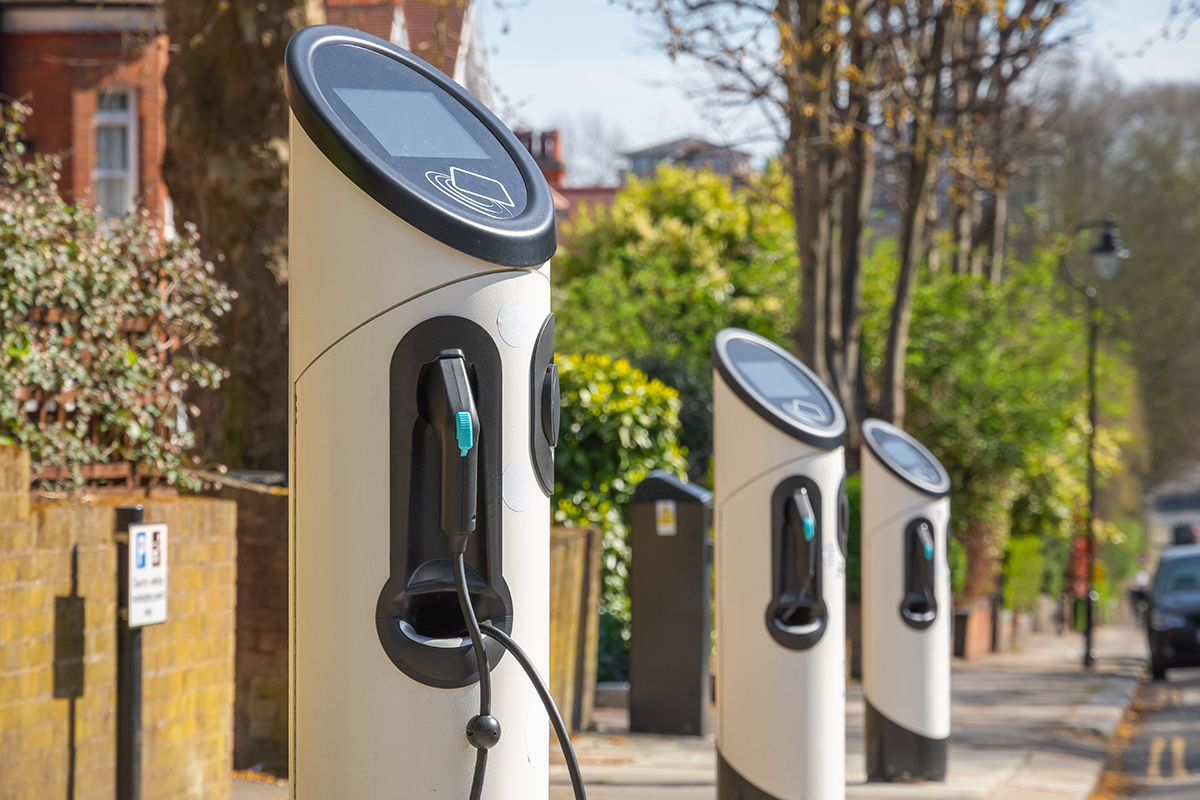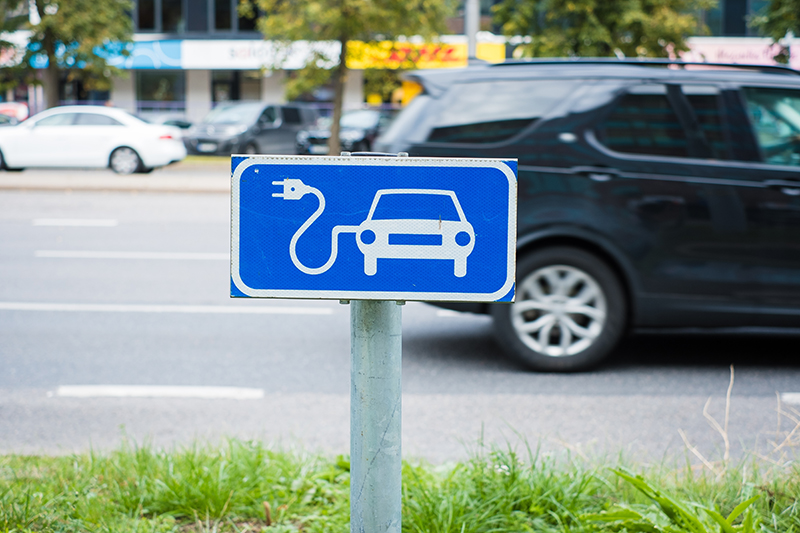Charging Your Electric Car With No Driveway: What Are Your Options

Published: Tuesday, 24 June 2025
While public EV chargers are becoming more widely accessible across the UK, powering up your electric vehicle at home is the preferred option for many.
But what do you do if your home doesn’t have a driveway where you can install your EV charger? In this guide, we’ll be looking at other ways you can charge your EV, without losing the convenience a driveway or reserved parking space provides.
Is charging your electric car with no driveway possible?
While off-street parking has always been a sought-after feature in the housing market, a huge proportion of the population lives in terraced houses or flats with on-street parking available only. Because of this, rather than charging your car right by your front door, there are several options available to you.
Even with no driveway, charging your electric car can still be extremely convenient for you. As the market for both commercial and domestic EV chargers grows, charging your car while you’re at work, the gym or even during your weekly food shop are all ways you can fit powering up your EV into your usual routine.
On-street EV charging
The next best thing to charging your car on your driveway is charging it just a few more metres away on the street outside your home.
Depending on your location, a range of different charging stations could be installed, including more recent EV chargers, which are attached to lamp posts in order to save space.
Two of the main areas to take into account when charging your EV on the street are the safety of your vehicle and allowing the charger to be shared equally if there are only a few chargers available to use.
If you don’t have an EV charger already installed on your street, your local council may be able to help you out. Local authorities are now being encouraged by the government to improve EV infrastructure across the UK, with the help of the On-Street Residential Chargepoint Scheme.
This scheme aims to develop the best electric vehicle infrastructure networks in the world, by making EV charging affordable, reliable, secure and accessible. For you, this means more opportunity to install an EV charger within easy reach of your home.
Cable Gullies
Cable gullies, also known as cable, channels, offers to house the charging cable through the pavement avoiding any trip hazard to pedestrians. Once your vehicle has been charged, the cable can then be removed and stored safely.
Regarding permission to install these gullies, if the pavement is owned by a private landowner you will need to obtain their permission to install a cable gully.
For public pavements, some companies work with local authorities so they are able to easily install in the area, if not, you will need to contact your local authority directly.
Public charging points
Although not as convenient as a home or on-street charger, there is now a growing amount of EV charging spots to choose from. Due to the help of the scheme above, it’s unlikely you’ll ever be too far away from a charging spot, with a 31% increase in the total number of charging devices on UK streets.
Rather than leaving your car to charge up overnight, public points provide you with a quicker charge, meaning you don’t have to make too many changes to your daily routine.
In public charging spots, there are a few ranges of charge to familiarise yourself with. These are identified as being slow, rapid, and ultra-rapid. As the name suggests, these chargers correlate with how fast the EV charges when these chargers are attached.
- Slow EV charger: this charger has a speed of 3-7 (kW) which equates to an average charge time of 10-23 hours.
- Fast EV charger: this charger has a speed of 7-22 (kW) which equates to an average charge time of 3-10 hours.
- Rapid EV charger: this charger has a speed of 50-100 (kW) which equates to an average charge time of 0.7-1.4 hours.
- Ultra-rapid EV charger: this charger has a speed of 100+ (kW) which equates to an average charge time of 0.5-0.7 hours.
As the Government continues to invest in EV charging, it’s likely that public charging points will become more widespread, providing a more convenient solution to charging your electric car with no driveway.

Workplace EV charging
One of the ways employers are taking sustainable measures is by installing commercial EV chargers at their workplaces - meaning you can conveniently charge your car, ready for the commute home.
Depending on the company, some businesses are even allowing their employees to top up their EV battery for free, as electricity is not classed as ‘vehicle fuel’, and therefore does not carry the benefit-in-kind tax implications if a company does offer this to employees.
What is the Workplace Charging Scheme (WCS) Scheme?
The popularity of installing these EV charging points partly comes from the government's Workplace Charging Scheme (WCS) which covers up to 75% of the overall purchase and installation costs of an EV charger.
Peer to peer EV charging
If your neighbours are also in the market for electric vehicles, you could consider sharing an EV charger. Peer-to-peer charging allows individuals to share their private EV charge points at a negotiated fee. This is done by making charging points available whilst they are away.
This brand new concept has allowed drivers to reduce range anxiety for other drivers, whilst also profiting themselves.
Regulations for peer to peer EV charging
- The EV charger must have smart functionality, including the ability to send and receive information, including signals to increase the rate at which electricity flows through the charge point.
- The EV charger should allow for continued charging even if the charge point becomes disconnected from a communications network.
- Safety provisions, preventing the user from carrying out an operation which could risk the health or safety of a person, including obtaining specific certifications.
- A measuring system, to calculate the electricity imported or exported, as well as the time the charging lasts.
- Security will be consistent with the existing cyber security standard ETSI EN 303 645.
Other charge point regulations include:
- Incorporate pre-set and off-peak default charging hours, allowing the owner to accept, remove or change these upon first use.
- Allow for a randomised delay function.

FAQs
Can you have an electric car if you live in a terraced house?
In short, if you live in a terraced house or flat you can still easily use an electric car, but a few more steps might be involved. The vast majority of terraced houses don’t have their own private parking space, and building regulations don’t allow for EV chargers to be installed outside terraced homes. While the Government is working to make electric vehicles a more accessible option for everyone, if you live in a terraced house currently, you’ll likely find it easier to charge your car at a public charging point.
Can I run EV charging cable over the pavement?
If you’re parked up on the street by your house, it can be tempting to run a cable from your house, directly to your car. Running an EV cable across the pavement can cause significant obstructions to pedestrians, pushchairs and wheelchairs. You must check your local Council’s regulations before charging your EV in this way, as localities differ across the UK.
If you are in a situation where there is no way to avoid pavements, your EV should only run over these pavements and footpaths whilst the vehicle is charging, with it being removed when the EV is fully or adequately charged.
How long can an electric car sit without being charged?
Electric cars lose some charge when parked: this power loss is minimal, so won’t impact your driving experience if you use your car regularly. However, if you only use your car every few weeks, you’ll need to check how much power you have before your journey. An average of 2-3% charge is lost per month, so you are advised to charge your EV regularly.
Top Tip: Keeping your car at regular temperatures away from extreme heat or freezing conditions will help to maintain your EV battery’s life.
Looking for an EV charger?
YESSS Electrical’s comprehensive, reliable and quality range will leave you spoilt for choice, whether you’re in need of an EV charger for your organisation, or for your home. Browse our range of commercial and domestic EV chargers today.

